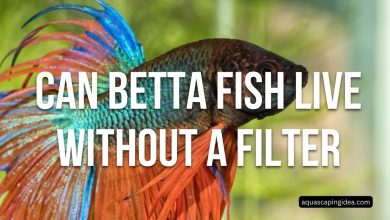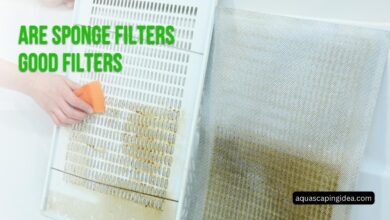Anubias Congensis Care

Aquatic plants impart natural beauty while keeping fish healthy. But many popular species challenge beginners with precise environment and nutrition requirements. Enter Anubias Congensis – an undemanding African native ideal for aquarists of all skill levels.
From its lush broad leaves to nearly indestructible growth, this resilient plant earns renown as a virtually foolproof aquarium inhabitant. Even better, its graceful form and vibrant tones make a captivating focal point.
Read on to discover why Anubias Congensis deserves fame as the ultimate starter plant and how to cultivate it for long-lasting enjoyment.
Anubias Congensis Overview
Anubias barteri var. Congensis hails from gentle streams and lakes in Africa’s Congo River basin where warm, mineral-poor water and shaded daylight abound. Like other Anubias barteri cultivars, its thick green spearhead-shaped leaves emerge from a dense vegetative rhizome pad anchored by small fuzzy roots.
Leaves may reach an impressive 8 inches in length when provided ideal growing conditions. But expansion unfolds gradually – expect just a few new leaves annually. This turtle’s pace makes maintenance easy, especially for beginners.
Anubias Congensis readily adapts from a fully submerged existence to emersed growth in paludariums. It even readily transitions back to underwater growth after living immersed. Such resilience allows utilizing Congensis’ pretty form in multiple ways.
Water Conditions
Coming from equatorial freshwater biomes, Anubias Congensis thrives in familiar warm, soft, flowing water environments:
● Water Temperature: 72°-82°F. Able to withstand 65°F at the low end.
● pH: 6.0-7.5. Can tolerate more alkaline water near 8.0 pH.
● Water Hardness: Soft to medium 4-10 KH/GH range
Sticking closely to these natural parameters keeps Congensis growing strong. But also focus on consistency – avoid large chemistry shifts in either direction.
Aquarium Setup Guidelines
Aquascaping with Anubias Congensis involves more attaching than traditional planting. Secure the rhizome to hardscape creations like:
● Driftwood: Pieces of wood, often branches or logs, that have been naturally weathered and can be used as decor in aquariums. Driftwood provides surfaces for attaching plants and shelters for fish.
● Lava rock: Porous, volcanic rock that can be used as decor or to help with biological filtration in aquariums. Its rough texture allows plants to easily attach.
● Suspended bogwood: Bogwood, or wood that has been submerged in water for an extended time, that is positioned above the substrate using rocks, suction cups, or other anchors to create overhanging structures.
● Partly submerged cliffs and boulders: Larger rocks or rock formations that are partially buried in the substrate to create elevated, protruding surfaces above the tank floor. These can mimic cliff or riverbed environments.
Arrange specimens to allow broad triangular leaves to drape down prominently. Mix with other epiphytes or let Congensis string across the tank alone. Ensure ample water motion around its foliage.
Substrate Selection
Unlike heavy root feeders, nutrients play a minimal role in Congensis growth thanks to its camel-like rhizome reserve. Hence nearly any stable aquarium substrate works including:
● River gravel ● Crushed coral sand ● Peat/soil based plant substrates ● Plain aquarium sands
Laterite clay and nutrient-rich sediments provide some benefit but are in no way essential to grow Anubias Congensis successfully.
Lighting Conditions
While tolerant of quite low lighting, optimal expansion and coloration start at 50 micromols of PAR (Photosynthetically Active Radiation). Place specimens under LED panels or fluorescent lighting calibrated to deliver a moderate level across the tank bottom. Limit intensity to 100 PAR tops to prevent algal issues.
Maintain a consistent 10-12 hour daily photoperiod as well. Avoid direct harsh sunlight as well as 24/7 bright light exposure.
Fertilization Requirements
Apply aquarium plant root tabs or nutrient-rich substrate when first planting rhizome cuttings or divided specimens to spur establishment. This kickstarts root development.
But once settled in, Anubias Congensis largely ignores further fertilization thanks to its 1-2 inch per year growth rate. Limit phosphates and nitrates to prevent problematic algae – unlike faster growing stems that require consistently high nutrients.
Tank Mates
Congensis’ tough leaf composition deters most fish and inverts from nibbling. Its bitter iron-rich taste also foils would-be grazers. Only dedicated plant eaters like some silver dollars pose concerns. Generally peaceful community species make the safest companions as they mostly ignore the foliage.
Bettas especially complement Anubias beautifully. These long-finned beauties love resting on its sturdy broad leaves in thickly planted setups. Avoid known fin nippers instead that might shred elaborate betta tails.
Propagation
Producing more Congensis requires simple rhizome division using a sterilized blade. Cut a rooted section with at least 3 leaves and plant firmly or attach with gel or fishing line until established. Promote quick rooting by burying just the cut rhizome section, leaving most of the width exposed to water flow.
The slicing also stimulates the parent rhizome to sprout new shoots. Over years, a lone Anubias turns into an entire green underwater hedge!
Ongoing Care & Maintenance
Caring for Anubias Congensis chiefly involves preventing water quality deterioration and manually removing algae accumulation:
● Perform 10-20% weekly water changes to eliminate organics ● Wipe algae from leaves using a soft brush/cloth ● Remove decaying plant sections via rhizome slicing ● Propagate overgrown clusters to share with others!
Given optimal stable conditions and gentle care, Anubias continues growing for years almost carefree. It’s one of the most durable aquarium plant species around.
Troubleshooting Common Issues
Being sensitive to change, monitor closely when altering environment variables:
● Leaf Holes – Likely a sign of potassium deficiency if new. Consider adding K-rich root supplements.
● Curled Leaves – Fluctuating water chemistry often causes temporary curling as Congensis adapts. Ensure stable, appropriate params.
● Stunted Growth – Can indicate insufficient lighting, nutrition, or organics removal. Assess conditions and intervene accordingly.
● Melting Foliage – Major stressor like toxicity, parasites, temp shock, etc. Test water ASAP and perform large water change.
Catch problems early before colonies require major trimming or treatment. But fungus and rot often force discarding badly damaged specimens to protect others.
Frequently Asked Questions
Is Anubias fully aquatic or does it grow emersed too?
Anubias naturally thrive fully submerged, but also readily emerge from water to grow in bog gardens and paludariums. The foliage handles both environments.
How do I plant Anubias without burying the rhizome?
Use gel superglue, cotton thread, rocks, etc. to temporarily anchor new plants until water rooted instead of planting in substrate. Rhizome burial causes rot.
Why are my Anubias leaves turning yellow or brown?
Could indicate nutrient deficiencies, organics accumulation, or water quality issues. Analyze conditions and intervene accordingly via supplementation and water changes.
Can I grow Anubias in a low tech setup?
Absolutely! Anubias actually prefer lower lighting and fertilization rather than high-maintenance environments. They evolved to grow in nutrient-poor water.
Conclusion
Natural aquatic beauty without the challenging care requirements – that’s the real majesty of Anubias Congensis. This undemanding African native not only thrives in common home aquarium water conditions, but brings graceful textures and vibrant hues sure to become focal points. Commit its simple needs to habit rather than memory and sustain luscious Congensis for years on end with remarkable ease. Before long, even newcomers to the hobby unlock the secrets to cultivating aquatic art guaranteed to garner “how do you grow that?” inquiries




